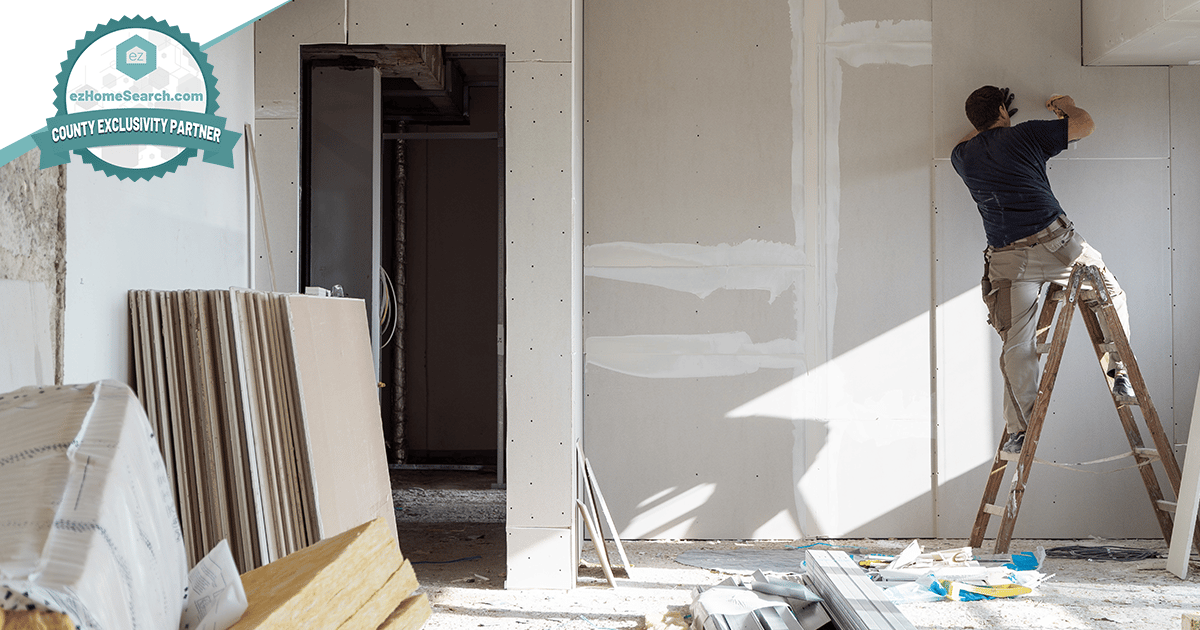22 Things to Look For During a Final Walk-Through
January 9, 2025

January 9, 2025

Closing day is around the corner, and emotions are in. You’re finally going to be a homeowner. But before you uncork that bottle of champagne and prepare your best smile for the new home photos, there’s one more thing to get out of the way: the final walk-through.
The final walk-through is a pretty straightforward process and one of your rights as a buyer. However, sometimes there’s so much to consider, and the financial and emotional investment is so significant that the worry and fear of missing potential problems with the home may arise. First-time buyers may also lack the necessary experience and feel unsure about what to check and how to identify possible red flags.
Worry not! Here is our list of the 15 things to look for during a final walk-through to prepare you for this last but significant part of the homebuying process. You can use it as a walkthrough checklist to cover your bases.
Also referred to as a verification walkthrough or pre-closing inspection, the final walkthrough is a crucial step in the home-buying process. It involves a thorough buyer evaluation of the property just before closing the deal, typically accompanied by their real estate agent.
The goal of the final walkthrough is to verify that the home remains in the same condition, or better, than when the buyer last inspected it. If the seller agreed to make repairs, it is time to confirm they’ve been completed. During the walk-through, buyers also:
Check for missing items.
Make sure everything is working as it should.
Confirm the home is empty of the previous owner’s belongings.
Inspect areas that were hard to access before.
General Interior Assessment
Walls and Ceiling: Look for cracks, peels, water stains, or signs of mold.
Floors: Check if they’re still in good shape. Look for stains, scratches, and other issues that cleaning tools may not fix.
Doors & Windows: All should smoothly open, close, and lock.
Lighting Fixtures and Bulbs: All fixtures included in the sale should be present and functioning. Bulbs shouldn’t be burned out.
Ceiling Fans: Should be functioning without noise or quivering.
Fireplace and Chimney: Inspect for excessive soot or blockages.
Electrical System
Outlets: Test every electrical outlet in the home. You can use a cellphone cable to do this. Don't just go by if the green light is lit.
Circuit Breaker: Check for signs of overheating, like discoloration or smell. Each breaker should be labeled for future troubleshooting.
Plumbing System
Faucets and Showers: Let water run to check pressure and temperature. Also, look for leaks.
Toilets: Flush the toilets in every bathroom to see if they drain and refill ok.
Sinks and Drains: Run water to confirm no clogs or slow drainage.
Kitchen
Appliances: All appliances should be present. Check all are functioning, including refrigerator, dishwasher, stove, and microwave.
Cabinets and drawers: Confirm all open, close, and latch. Also, check for chips, scratches, alignment issues, and signs of pests or water damage.
Bathroom
Exhaust fan: Verify it’s working correctly to avoid potential humidity and mildew issues later.
HVAC System
Heating and Cooling: Operate both systems –no matter the weather you’re in– to verify they work. Air should flow adequately. Ask for the system’s age and if it’s under warranty. You should not hear unusual noises.
Air Filters: Check if they are clean or need replacement.
Attic & Crawl Spaces
Moisture Issues: Look for evidence of dampness, mold, or water intrusion.
Pests: Check for signs of rodents or insects.
Safety Features
Smoke and Carbon Monoxide Detectors: Test all units in the house to verify they’re operating.
Garage
Door Sensors: Test auto-reverse safety features.
Floor Stains: Identify potential oil or chemical leaks as well as cracks, proper ventilation, and signs of pests
Electrical and Storage Features: Test the electrical outlets, lights, and built-in storage sturdiness and functionality.
Basement
Complete Integrity: Inspect walls, floors, and ceilings of the basement for cracks, water stains, pests, or damage. In addition, take a look at the plumbing and HVAC systems and see all windows open, close, and lock properly (especially egress windows).
Siding
Overall Condition: Watch for cracks, chips, dents, or warping that could indicate damage or wear over time. Also, check for discoloration, fading, or uneven patches. Also, look for water damage.
Fencing and Gates
Integrity: Look for damage or weaknesses. Make sure all gates open and close correctly.
Exterior Faucets
Leaks: Turn on all outdoor faucets to check for proper water flow and leaks.
Winterization: Check to see if they're protected against freezing, especially if you live in a location with harsh winters.
Septic System (if applicable)
Recent Maintenance: Request records to confirm regular servicing has been done.
Drain Field: Walk around for soggy spots or unpleasant odors signaling septic problems.
Decks and Other Structures
Structural Integrity: Check outdoor features for signs of wear and damage. Check for stability and inspect for rot, cracks, or board splinters.
Driveway and Walkways
Surface Condition: Check for cracks, uneven areas, or trip hazards.
Drainage: Ensure water doesn't pool in the driveway after rain.
Outdoor Lighting
Functionality: Test all fixtures, including motion sensors.
Timing Systems: Verify timers are appropriately set.
Gutters and Downspouts
Debris: Check they're clean and free-flowing.
Extensions: Confirm downspouts direct water away from the foundation of the home.
Roof
Shingles: From the ground, look for missing or damaged shingles. Observe the roofline for any sagging that suggests structural issues.
Pool & Spa
Condition: If the home you are walking through has a pool, inspect it for mold, mildew, and lining damage. Also, check the pool gate for damages.
Landscaping
Grading: Check ground slopes away from the house to keep water from pooling near the foundation.
Tree Health: Look for dead branches or trees that may pose risks.
Trash
Removal: Confirm the home is free of trash and debris after the seller moves out.
Garbage Details: Locate the trash cans and confirm the scheduled collection day.
Even the most thorough and experienced buyers can let small details fall through the cracks—but not after reviewing the bonus list, we’re about to share.
Make sure the peepholes on the front door are clean and give a clear view of the outside. Test the doorbell to ensure it works properly, and if the home includes an intercom or video doorbell system, check that it’s connected and functioning.
Verify that you have the keys to the mailbox and test them to confirm they work smoothly. If the property is part of a community with cluster mailboxes, validate which box belongs to the home you’re buying and inspect it for any damage.
Double-check that the house numbers are securely attached and visible from the street—a small detail makes a big difference! Clear, visible numbers mean the mail carrier won’t miss your home, and emergency services can get to you without wasting precious time. If they’re looking a little worn out or hard to see at night
Check if manuals for appliances such as dishwashers, refrigerators, and washers/dryers can be provided, along with any transferable warranties or extended service agreements.
You should have access to all remote controls for devices like ceiling fans, garage doors, and smart home systems. Test each one to ensure it works properly. If the remotes require pairing or reprogramming, ask for instructions or guides.
During the final walkthrough, inspect the irrigation system (if there is one) to ensure it is fully operational and issue-free. Test each sprinkler zone, check for leaks or clogs in the heads, and verify that the control panel or timer functions properly for efficient watering.
Locate the modem and any WiFi boosters within the home to ensure they are positioned in optimal coverage areas.
If the property includes shared spaces like a garden, gym, or clubhouse, confirm with the home seller that you have the necessary keys or access cards. Then, test them to ensure they work so you can enjoy these common areas without hassle after moving in.
If the preliminary home inspection went well, you shouldn’t expect many concerning issues to arise during the final walk-through, especially if you were present while the licensed professional inspector was conducting the assessment. Still, if some time has passed, you can still encounter something new that concerns you enough to take action. In that scenario, follow these easy steps:
Documenting whatever issues you uncover is key.
Make sure to take notes on the severity and location of the issue.
Discuss the next steps with your realtor and seek their expert advice.
Your agent will typically contact the seller or their agent to inform them of the final walk-through findings. Depending on the severity, you can:
Request Additional Repairs: Ask the seller to fix the problems before closing.
Negotiate a Credit: At closing, you can agree on a financial credit to cover the cost of repairs. This will allow you to address the issues after closing the deal.
When deciding how to address the issues, the usual next steps include updating the purchase agreement to reflect any agreed-upon repairs or credits. If you need extra time to finalize these terms, consider postponing the closing date. Once everything is squared away, ask your agent to schedule a follow-up walkthrough to confirm that all the agreed-upon work has been completed as expected.
The final walk-through is to a home what a test drive is to a car: a vital step to verify that your potential investment is in good condition before committing your money. So don't skip this homebuying step!
Now, you can use our comprehensive walk-through checklist, which features 22 essential items to review. Use it to thoroughly examine every corner of the home, leaving no room for surprises as you move forward with the purchase. Best of luck!
Preston Guyton is the founder of ez Home Search. He has been a real estate leader for over 20 years. Starting with a focus on South Carolina, he has helped coach and empower real estate professionals to achieve their full potential by meeting the needs of their local community.
Stay up to date on the latest real estate trends.

August 30, 2025

July 4, 2025

June 26, 2025

May 23, 2025
What’s Included In Real Estate Closing Costs

May 22, 2025
A Guide for South Florida Home Buyers

January 9, 2025
You've got questions and we can't wait to answer them.